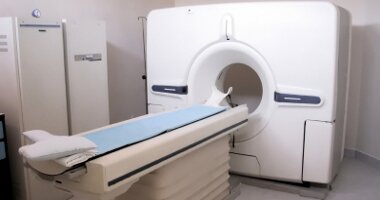Stem cell transplants for dummies
High dose chemotherapy (HDC) is the therapy of choice for relapsed (recurrent) aggressive NHL and often for relapsed indolent NHL. Basically, this is a lethal dose of chemotherapy, enough to kill off virtually all existing blood cells and the blood cell producing cells in the marrow. Needless to say, this would normally cure the disease, but kill the patient.
Peripheral Blood Stem Cells are the baby cells that produce red and white blood cells when they grow up. The baby cells are uneducated (undifferentiated) and have to be taught what kind of cells they are to produce. (I'm not sure of the mechanism involved.) If you give the patient stem cells (or bone marrow cells) after you kill him with HDC, the stem cells will recolonize the bone marrow and start producing the various kinds of blood cells again. This is called a stem cell rescue or transplant. In theory. We hope. Actually it really works. Especially if the patient is given stem cells taken from his own body. At USCF, they claim a survival rate for autologous (taken from the patient) peripheral blood stem cell rescues is about 98.5%. The survival rate drops to 95% if bone marrow cells are used instead of stem cells. Also, recovery is slower for rescues using bone marrow cells. If this is done, then there is a good chance, (I was told 40% in my case) that the lymphoma will be gone forever.
Of course, the HDC is dangerous, aside from the fact that it is lethal. They figure that successful PBSCT patients will have about a one out of 7 chance of future cancer caused by the HDC. Usually leukemia, especially in the first seven years.
Someone else's stem cells or bone marrow cells can also be used. This is called an allogeneic bone marrow transplant. However, unless the donor is an identical twin (same DNA), the danger is greatly increased. I've heard that the survival rate in this case is about 60-70%. On the other hand, the donor's marrow works against the patient's lymphoma (Graft vs host disease GVHD) possibly improving the patients chances of a cure if he survives the transplant.
There is a version of this called a mini-BMT where donor bone marrow or stem cells are introduced without killing off the entire immune system to induce GVHD. Sort of like giving an obese person a permanent stomach ache so they won't eat so much, but if it works, hey! (GVHD causes some nasty side effects. It is a disease, after all.)
Here's how a PBSCT works. First they give you strong chemo to get you in or near a complete remission. This is usually ESHAP or ICE. Then they give you a single dose of "induction" chemo, often high dose Cytoxan, to force new stem cells out of the marrow into the blood stream. The induction chemo will drop your white blood count down to near zero. While you are recovering from the induction chemo, you get shots of Neupogen, a drug that increase the production of white cells. When your white blood count gets high enough (10,000) they hook you up to a machine that filters your blood and gathers the stem cells. This may take from one to seven days.
When they get enough stem cells (at least 2,000,000 per kilogram of body weight, but they like a lot more), you go home and recover. (This can be done on an outpatient basis.) Then they process the stem cells, and freeze them for later use. Hopefully they don't lose the bag--it contains your life.
If they can't get enough stem cells, then they can surgically extract bone marrow cells to use instead. Like having about twenty or thirty bone marrow biopsies. Fortunately, they use general anesthesia for this. So you go home, check your will, etc. Then you return and check into the hospital.
Then comes about five days of very strong chemo (lethal, remember) but it's not that bad. A day or two later, they come in with a little bag containing some yellow stuff. That's your stem cells. They then transfuse the stem cells into your blood stream. Takes about a half hour. This is sometimes called, "The twenty-four hours of garlic." The DMSO used to store the stem cells makes you smell like garlic. Strongly. You may or may not taste garlic all day. They usually have mints available.
During the chemo and after they are going to pump a LOT of fluids into you. So they give you Lasix to get your kidneys to work overtime. This is called, "Pissing like a racehorse." I kept four urinals by the bedside, and filled up all of them about every three hours. Now comes the bad part. You get sicker and sicker and know that tomorrow you will be sicker still (the worst part.) They will hook you up with a pump for morphine or some such and give you a button to press when you need an extra dose. That button becomes your best friend, as you hurt all over. You lose your appetite and they start TPN (Total P-something Nutrition), feeding you via I/V. Huge bags filled with some nasty looking yellow stuff. Just another IV, really, You have an IV tree which goes wherever you go. (At the start of this, they implant a catheter directly to your veins.)
You get all kinds of stuff pumped into you, especially antibiotics, since by this time your immune system has totally shut down. You can expect to receive transfusions of platelets and red blood cells as well. You're sick and getting sicker. I had chills, uncontrolled shivering, and terminal hiccups. Popsicles are really nice at this time. (You have mouth sores and sores in other places with mucous membranes.) They also expect you to exercise. Walk the halls, masked, pulling the IV tree, preferably about a mile a day. Starting about your third week in the hospital you start feeling better. You reduce your intake of opiates, start eating a bit, even though food tastes different (read bad). And you start getting stronger. Soon they release you. You are weak as a kitten and tire very easily. Someone has to be there to help you. As time goes on, you get stronger and healthier. Taste returns to normal and hopefully you are cured.
© 2000 Robert Scott Pallack














